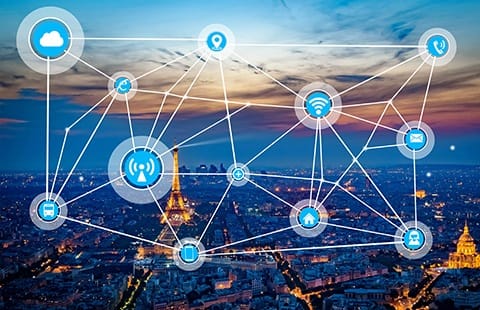Wireless Communication
Wireless communication refers to the transmission of data or information over a distance without the use of physical cables or wires. This technology utilizes electromagnetic waves such as radio frequencies, microwaves, or infrared signals to carry information from one point to another. Wireless communication has become an integral part of modern life, powering various devices including smartphones, laptops, tablets, IoT (Internet of Things) devices, and more.

Wireless Communication
Wireless communication has revolutionized the way we communicate and interact with the world around us. It refers to the transmission of data or information over a distance without the use of physical cables or wires. This technology has become an integral part of modern life, powering various devices and services that we rely on every day, from smartphones and laptops to IoT devices and smart home systems.
History and Evolution
The concept of wireless communication dates back to the late 19th century with the invention of the radio by Guglielmo Marconi. Marconi’s experiments paved the way for long-distance wireless communication using electromagnetic waves. Over the decades, advancements in technology led to the development of various wireless communication systems, including radio broadcasting, television broadcasting, and early forms of mobile communication.
The true proliferation of wireless communication began in the late 20th century with the advent of digital technologies. The introduction of cellular networks in the 1980s revolutionized mobile communication, allowing users to make calls and send text messages wirelessly. The subsequent development of technologies like Wi-Fi and Bluetooth further expanded the capabilities of wireless communication, enabling high-speed data transfer and connectivity between devices.
Principles of Wireless Communication
Wireless communication relies on the transmission of electromagnetic waves, which propagate through the air or space. These waves carry information in the form of modulated signals, which can be encoded and decoded to transmit data reliably over long distances.
The key components of a wireless communication system include:
- Transmitter: The transmitter is responsible for encoding the information to be transmitted and converting it into electromagnetic waves for transmission.
- Receiver: The receiver captures the transmitted electromagnetic waves and decodes the encoded information to retrieve the original data.
- Antenna: The antenna is used to transmit and receive electromagnetic waves efficiently. It converts electrical signals into electromagnetic waves for transmission and vice versa for reception.
- Modulation and Demodulation: Modulation is the process of encoding information onto a carrier wave, while demodulation is the process of extracting the original information from the modulated signal.
Types of Wireless Communication
- Cellular Networks: Cellular networks provide mobile communication services using a network of base stations and cell towers. These networks support voice calls, text messaging, and mobile internet access. Generations of cellular networks include 2G, 3G, 4G, and 5G, each offering improvements in data speed, capacity, and latency.
- Wi-Fi: Wi-Fi, or Wireless Fidelity, enables wireless local area networking (WLAN) using radio waves in the 2.4 GHz and 5 GHz frequency bands. It allows devices to connect to a local network and access the internet wirelessly within a limited range, typically within a home, office, or public hotspot.
- Bluetooth: Bluetooth is a short-range wireless technology used for connecting devices in close proximity, typically within a range of a few meters. It is commonly used for wireless audio streaming, file sharing, and connecting peripherals such as keyboards, mice, and headphones to computers and smartphones.
- Satellite Communication: Satellite communication utilizes satellites in orbit around the Earth to relay signals between ground stations or other satellites. It is used for long-distance communication in remote areas where traditional infrastructure is not feasible, such as maritime and aviation communication, as well as broadcasting and internet access in rural areas.
- NFC (Near Field Communication): NFC enables short-range communication between devices, typically within a few centimeters. It is commonly used for contactless payment systems, access control, and data exchange between smartphones and other NFC-enabled devices.
